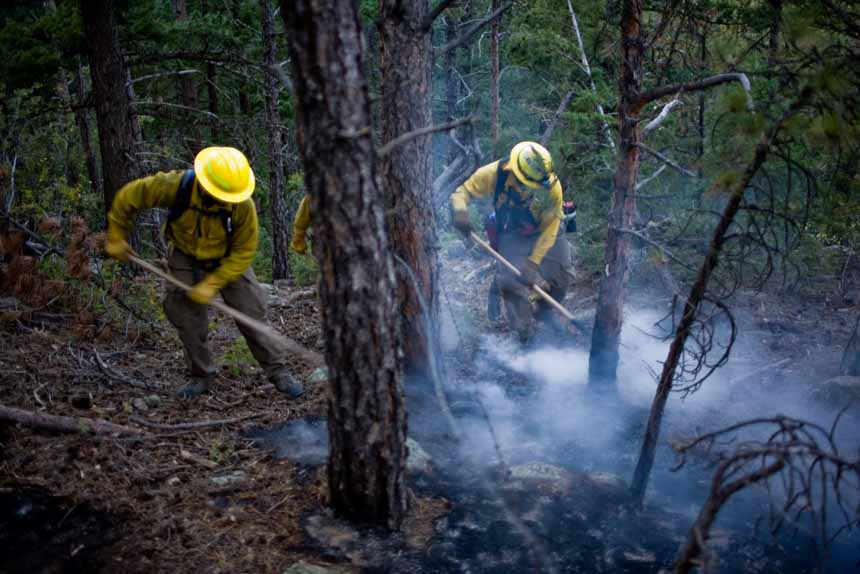Dolly Parton and Smokey Bear urge wildfire prevention in the Great Smoky Mountains.
Category: Uncategorized
Victoria’s advanced systems for engine crew protection
Above: Country Fire Authority test of engine burnover protection systems. Screen shot from CFA video.
The Aussies are far ahead of wildland firefighting agencies in the United States when it comes to the protection of personnel during fire engine burnovers and rollovers. Since 1977 Victoria’s Country Fire Authority (CFA) has been creating, evolving, and improving systems to increase the odds of firefighters on an engine surviving if their position is overrun by fire. These efforts were intensified after two engine burnovers in 1983 and 1998 killed a total of 17 firefighters.
During the last 39 years the vehicles have been hardened in various ways. Examples include internal radiant heat curtains and nozzles positioned around the exterior of the truck that spray water as the fire approaches.
We did a quick search on Wildfire Today for “engine burnover” and were surprised at the number of results. Take a moment and at least look at the titles and brief excerpts. These, of course, are just articles on our website. We make no claim that all engine burnovers are included since we started this website in 2008.
On November 21 the CFA posted a video (below) about their crew protection systems. It covers the history of their efforts and several minutes of video recorded during a test when a fire was ignited that burned over three of their engines to evaluate the effectiveness of the designs. The maximum temperature recorded was 728°C (1,342°F)
Below is a screen shot from the CFA video.
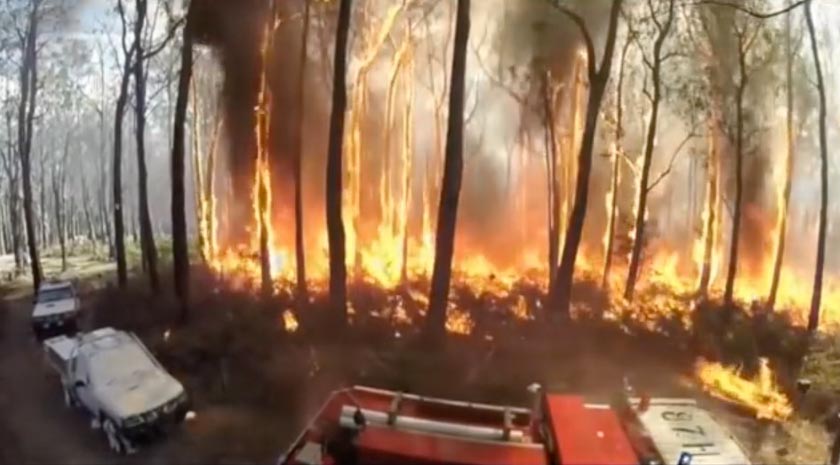
What if — in 2006 the five U.S. Forest Service firefighters that were entrapped and killed on the Esperanza Fire, instead of working on an engine similar to the USFS engine farther down this page, had been assigned to one built to CFA standards. Would they have taken refuge in the engine, pulled down the thermal protection shields and turned on the truck protection water spray instead of attempting to survive the fire outside the engine?
One feature of the CFA engines we noticed was a heavy-duty internal roll bar.
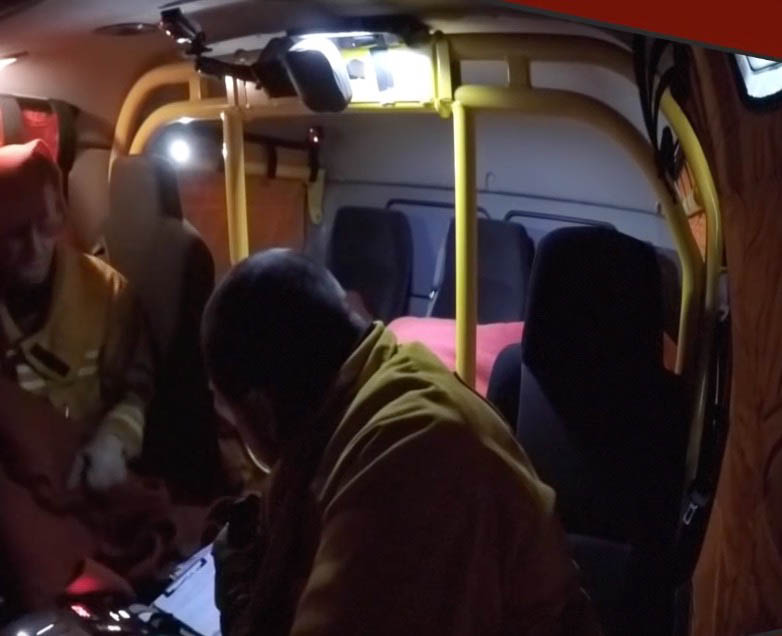
We have written before about the need for U.S. wildland firefighting agencies to improve the survivability of engine crews during rollovers. These accidents involving large fire trucks, especially water tenders, are common.
In our opinion it is disgraceful that the outfits employing thousands of firefighters on engines have not taken this step to provide a safer working environment for their personnel.
The photo below is from one of the 34 articles on Wildfire Today tagged “rollover”.
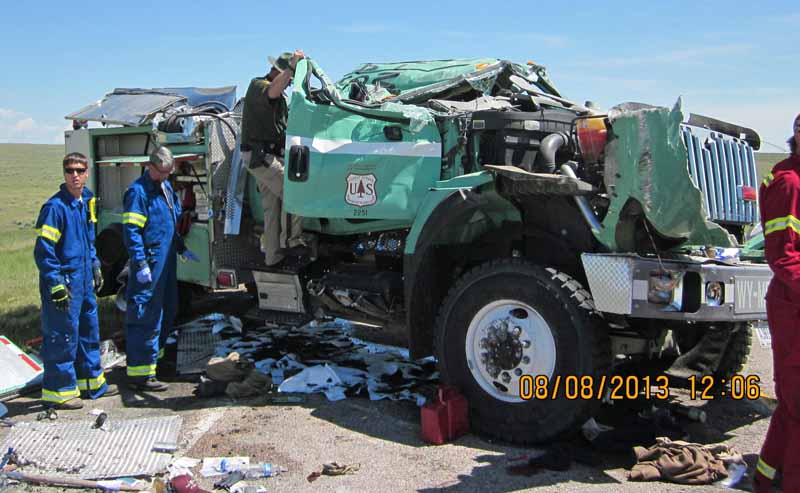
Thanks and a tip of the hat go out to Cameron.
Five of the most active wildfires in the South
Above: Three fires were generating the smoke detected by a satellite on November 27: Rock Mountain, Camp Branch, and Pinnacle Mountain Fires.
The wildfire activity in the southern states has slowed a bit over the last few days. The day before Thanksgiving there were about 4,100 personnel assigned to fires in the area. By Saturday that number had decreased to 3,400.
The smoke generated by fires that has plagued residents for weeks has also diminished considerably. Today’s satellite photo, above, only shows three fires that are creating enough smoke to be seen from hundreds of miles overhead. These are the Rock Mountain (Georgia and North Carolina), Camp Branch (North Carolina), and Pinnacle Mountain Fires (South Carolina).
Just five fires in the Southern Geographic Area reported size increases on Saturday — a major change from recent weeks.
Rock Mountain Fire
The Rock Mountain Fire in Georgia and North Carolina grew by 2,578 acres in the last 48 hours and now has covered 20,647 acres, which is considered huge in this part of the country. It has spread to within 4 miles of Otto, NC and 4 miles of Dillard, GA. The fire was mapped Saturday by Colorado’s MultiMission Aircraft. Firefighters reported active surface spread in hardwood leaf litter in all directions, aspects and elevations on Saturday. Where it was not impacted by suppression it spread for half a mile. About 130 structures are threatened.
Camp Branch Fire
The 1,483-acre Camp Branch Fire is 9 miles west of Franklin, NC, an increase of 120 acres over the previous report. About 113 personnel are assigned to this fire which currently threatens 140 structures. On Saturday firefighters successfully conducted burnout operations on the northwest and southeast sides.
Pinnacle Mountain Fire
The Pinnacle Mountain Fire in Table Rock State Park added 217 acres Saturday to bring the total up to 9,147 acres. It is in northwest South Carolina 9 miles south of Brevard, North Carolina. The incident management team reports that 255 personnel are assigned and 1,133 structures are threatened. A burnout operation on Saturday brought the perimeter to the containment lines on the west and north sides of the fire.
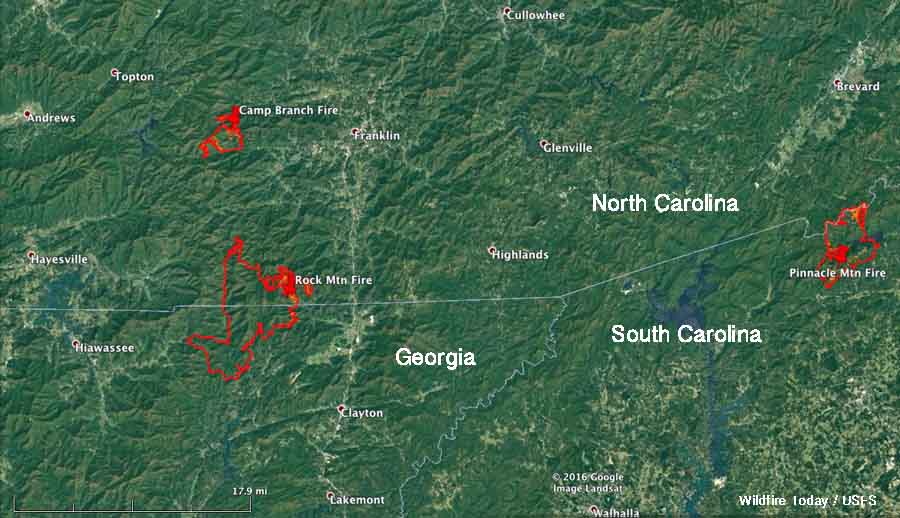
OTHER FIRES
Clear Creek Fire
The Clear Creek Fire is 7 miles northwest of Marion, NC. I has burned 2,986 acres, an increase of 363 acres. About 352 structures are reported to be threatened. The fire is staffed by 489 personnel.
Mount Pleasant Fire
The Mount Pleasant Fire, 9 miles west of Buena Vista, Virginia has blackened 11,200 acres, an increase of 200. High humidity Friday night aided suppression efforts, but that was followed by strong winds on Saturday. Area road and trail closures, including part of the Appalachian Trail, are in effect. The fire has burned across the Appalachian Trail between Road 507 and Cow Camp Gap. The increase in acreage was the result of a large burnout operation on Saturday.
For the latest articles at Wildfire Today about how smoke from the wildfires is affecting various locations in the South, check out the articles tagged “smoke”.
Wildfires in Israel force tens of thousands to evacuate
Firefighters have been battling a rash of fires since November 21.
Since Monday November 21 many wildfires have broken out in Israel, forcing 60,000 residents to flee from the coastal city of Haifa as the fire spread into the center of the metropolis.
Normally this time of the year the country would be entering their rainy season but the fires are occurring during a two-month drought. The situation has been worsened this week by strong dry winds making the fires more resistant to control.
Gilad Erdan, Israel’s public security minister, told reporters that almost half the fires were the result of arson. The term “pyro-terrorism” has been thrown around loosely in various articles, but that has not been confirmed by an authoritative source.
The fires slowed on Friday enabling some evacuees to return to their homes.
The Israeli newspaper Haaretz reported that the Israeli Air Force is using 10 drones to detect fires and spot suspected arsonists.
The 747 Supertanker has been contracted by the Israeli government and after a 12.5-hour non-stop flight landed in Tel Aviv at about 10:25 a.m. MST on Friday.
Global Supertanker Services sent two complete flight crews with the air tanker, President and CEO Jim Wheeler said. Each crew consists of two pilots and a drop system operator. In addition there were four maintenance and ground personnel, one supervisor, and Bob Soelberg, Program Manager for Global Supertanker, who will liaise with the Israeli government.
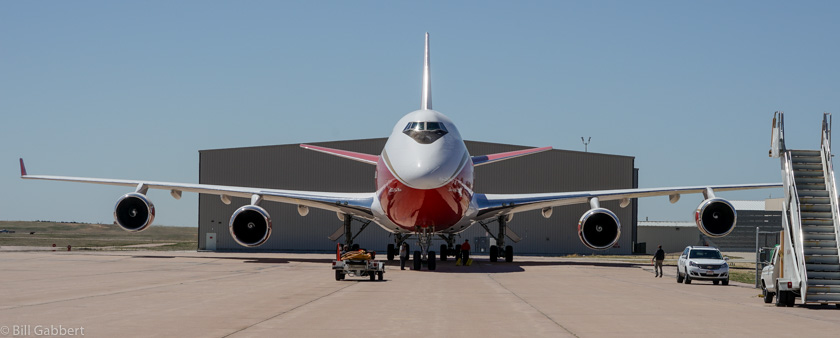
The 747 can drop retardant, foam, gel, or other fire suppressants.
This is not the first time a Supertanker has mobilized to Israel. In December 2010 the first generation of the aircraft dropped on the Mt. Carmel Fire in which 44 prison guards in a bus were killed after being trapped by the fire. The supertanker was one of 30 firefighting aircraft that were dispatched at that time from countries all over the world, including six Modular Airborne FireFighting System (MAFFS) air tankers from the U.S. military. The assistance from the MAFFS was approved and arranged late in the incident. Some never took off and others were turned around at a refueling stop in the Azores.
Since the deadly Mt. Carmel fire Israel has substantially beefed up their fire aviation resources and now have 14 Single Engine Air Tankers under contract supplied by Elbit Systems and Chim Nir Flight Services. The SEATs have their place in the firefighter’s tool box, but the 747 carries far more than all of their SEATs combined.
In June Israel loaned three of their SEATs to Cyprus to help suppress large fires near Paphos and Evrychou. Now they are on the receiving end as firefighting aircraft are arriving from the U.S., Greece, Cyprus, Croatia, Italy, and Turkey. In addition, Russia sent two water scooping Be-200 air tankers. One can be seen scooping in the video at the top of the page.
In spite of a report in a major east coast newspaper, the U.S. National Interagency Fire Center has not received any orders for firefighting resources. But, according to BLM spokesperson Randall Eardley, there have been some discussions about crew availability. Jessica Gardetto of the BLM said the Pentagon has inquired about the process for sending assistance internationally.
The weather forecast for Tel Aviv calls for warm, dry, and sunny weather through the weekend with 6 to 8 mph winds out of the northeast and relative humidities in the teens. For the 7 days after that the humidity will 33 to 57 percent with stronger winds on Wednesday through Friday.
Firefighters battling two fires in central Virginia
Above: Smoke from the Eades Hollow and Mount Pleasant Fires can be seen in a satellite photo taken Wednesday afternoon, November 23, 2016.
(Originally published at 5:55 p.m. ET November 23, 2016)
Two wildfires in central Virginia were very active on Wednesday, creating smoke that drifted northeast toward Washington, DC.
The Mount Pleasant Fire has burned 4,400 acres since it started November 19 10 miles northwest of Amherst, Virginia on the George Washington and Jefferson National Forests within the Mount Pleasant National Scenic Area. Wednesday morning 122 personnel were assigned, plus engines, dozers, three aircraft, and other resources that are en route. On Tuesday the fire grew by 1,689 acres. A Type 3 Incident Management Team from the Montana Department of Natural Resources has assumed command of the fire.

The Eades Hollow Fire 16 miles northeast of Amherst has blackened 922 acres, growing by 422 acres on Tuesday.
Continue reading “Firefighters battling two fires in central Virginia”
Fighting fire on Thanksgiving
Above: A briefing at the Springs Fire, Banks-Garden Valley, Idaho, Boise National Forest, Idaho Dept. of Lands, August, 2012.
Tomorrow, November 24, 2016 is Thanksgiving Day in the United States, a time when most Americans, in addition to having a fine meal and enjoying sports on television, are thankful for their blessings.
There will be about 4,100 firefighters in the southern states that will not have those pleasures. They will be constructing fireline, burning out, installing fire hose, applying water, driving across the country, attending briefings, providing logistics, dispatching personnel, completing time sheets, and making plans for the next day of putting out the 120,000 acres that are currently burning.
Please keep those men and women in your thoughts on Thursday.

